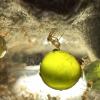- Formiculture.com
- Forums
- Gallery
- Members
- Member Map
- Chat

Can any one id this species?
Started By
Vern530
, Jan 12 2020 5:00 PM
15 replies to this topic
#1
 Offline
-
Posted January 12 2020 - 5:00 PM
Offline
-
Posted January 12 2020 - 5:00 PM
Caught in Northern California in January very active not in diapause. So I found a huge freshly escalated nest like big as a soft ball and when I broke it open these guys were super active and not sluggish at all.possible Id?
#2
 Offline
-
Posted January 12 2020 - 5:04 PM
Offline
-
Posted January 12 2020 - 5:04 PM
Pinkomyrmex floyderus
- Broncos likes this
My journals:
Polyergus Mexicanus: https://www.formicul...gs/#entry175528
Lasius minutus: https://www.formicul...cs/#entry174811
Lasius latipes: https://www.formicul...gs/#entry206449
General acanthomyops journal: https://www.formicul...yops-with-eggs/
Polyergus Mexicanus: https://www.formicul...gs/#entry175528
Lasius minutus: https://www.formicul...cs/#entry174811
Lasius latipes: https://www.formicul...gs/#entry206449
General acanthomyops journal: https://www.formicul...yops-with-eggs/
#3
 Offline
-
Posted January 12 2020 - 5:10 PM
Offline
-
Posted January 12 2020 - 5:10 PM
#4
 Offline
-
Posted January 12 2020 - 5:30 PM
Offline
-
Posted January 12 2020 - 5:30 PM
in the genus camponotus
#5
 Offline
-
Posted January 12 2020 - 6:00 PM
Offline
-
Posted January 12 2020 - 6:00 PM
But they were found In the ground and fully active in 50’ degree weather that doesn’t seem right for camponotus right?
#6
 Offline
-
Posted January 12 2020 - 6:08 PM
Offline
-
Posted January 12 2020 - 6:08 PM
But they were found In the ground and fully active in 50’ degree weather that doesn’t seem right for camponotus right?
Its Camponotus.
#8
 Offline
-
Posted January 12 2020 - 7:16 PM
Offline
-
Posted January 12 2020 - 7:16 PM
Definitely not camponotus vicinus I have about 7 of those colony’s currently
#9
 Offline
-
Posted January 12 2020 - 7:33 PM
Offline
-
Posted January 12 2020 - 7:33 PM
You can never judge on color. Length would be helpful.
Hi there! I went on a 6 month or so hiatus, in part due, and in part cause of the death of my colonies.
However, I went back to the Sierras, and restarted my collection, which is now as follows:
Aphaenogaster uinta, Camponotus vicinus, Camponotus modoc, Formica cf. aserva, Formica cf. micropthalma, Formica cf. manni, Formica subpolita, Formica cf. subaenescens, Lasius americanus, Manica invidia, Pogonomyrmex salinus, Pogonomyrmex sp. 1, Solenopsis validiuscula, & Solenopsis sp. 3 (new Sierra variant).
#10
 Offline
-
Posted January 12 2020 - 7:50 PM
Offline
-
Posted January 12 2020 - 7:50 PM
There a size comparison photo in that gallery.I've never seen Camponotus where I live I live in the valley in nor cal and it gets super hot here most the year.not saying it’s impossible but they sure don’t look like Camponotus to me
#11
 Offline
-
Posted January 12 2020 - 8:17 PM
Offline
-
Posted January 12 2020 - 8:17 PM
There a size comparison photo in that gallery.I've never seen Camponotus where I live I live in the valley in nor cal and it gets super hot here most the year.not saying it’s impossible but they sure don’t look like Camponotus to me
what do they look like to you then?
#12
 Offline
-
Posted January 12 2020 - 8:31 PM
Offline
-
Posted January 12 2020 - 8:31 PM
It's 100% Camponotus, there's nothing else it could be. Question now is what species.
#13
 Offline
-
Posted January 12 2020 - 8:33 PM
Offline
-
Posted January 12 2020 - 8:33 PM
I have no idea what species I just don’t think vicinus because I have several and even different color varieties of vicinus.but I do agree they are probably some type of camponotus although I’ve never seen them in my area but I haven’t been doing this all that long
#14
 Offline
-
Posted January 12 2020 - 8:38 PM
Offline
-
Posted January 12 2020 - 8:38 PM
I have no idea what species I just don’t think vicinus because I have several and even different color varieties of vicinus.but I do agree they are probably some type of camponotus although I’ve never seen them in my area but I haven’t been doing this all that long
That's fine, it may not be vicinus. I don't have much experience with identifications, so I'm not very helpful here.
#15
 Offline
-
Posted January 12 2020 - 9:01 PM
Offline
-
Posted January 12 2020 - 9:01 PM
No I appreciate any and all input from everyone next summer will make it my first whole year doing this hobby so I’m learning too.thanks again you offered some really good insights on a lot of my post
#16
 Offline
-
Posted January 13 2020 - 2:23 PM
Offline
-
Posted January 13 2020 - 2:23 PM
They probably were in diapause.
1 user(s) are reading this topic
0 members, 1 guests, 0 anonymous users



















